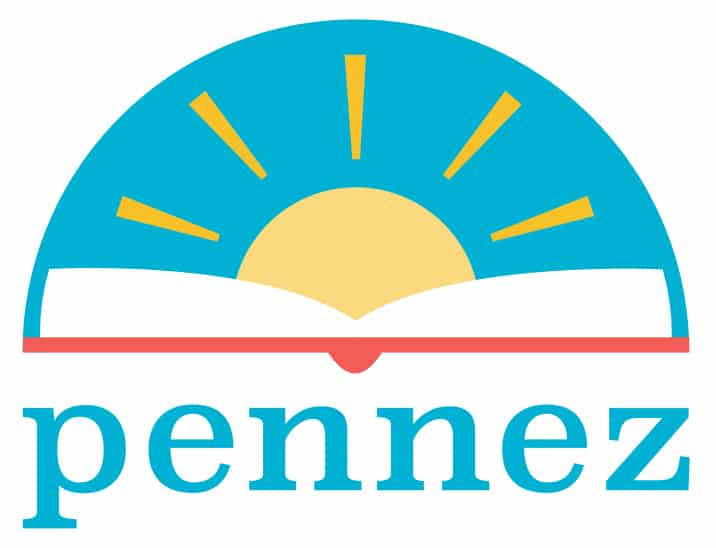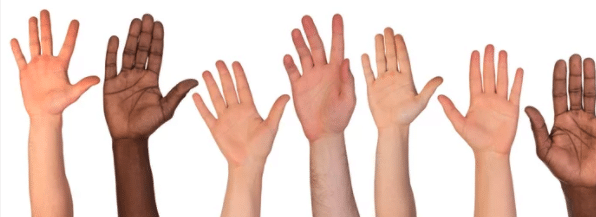-
Sign language can support oral language development.
-
American sign language is a visual language where the signer and viewer(s) communicate with their hands, fingers, and facial expression.
Sign Language is a visual language developed from generations of signers before 1817. In 1817, the first Deaf school in America was formed by Laurent Clerc and Thomas Gallaudet now called Gallaudet University. Though Gallaudet and Clerc established the first deaf school, sign language was used many years before by indigenous tribes, immigrants, and deaf people. It continues to grow today amongst hearing individuals. Sign Language can be used by Deaf, Hard of Hearing, or Hearing individuals. It is a systematic visual language that is learned and shared by others, changes over time, has its own set of rules, has its own set of symbols, and is honored by different communities. 1 As a parent, if you are considering teaching your baby or toddler sign language, it is never too late. Research has provided evidence that learning sign language early in infancy has positive effects on a child’s language development. One study showed that when a group of families used sign language, their children attained higher language skills compared to a group of families that did not learn signs. Research is still being done to provide more data and higher conclusions on sign language, but a person who signs in ASL and speaks an oral language is considered bilingual. Other studies have shown that learning sign language keeps words in your mind. Take for example, learning to fingerspell, one has to know the spelling of that word and must know how to use it in a sign.
ASL vs. Spoken English
American Sign Language uses words from the English language. Signs are visually represented as a fingerspelled word or as a sign. In contrast, the ASL rules on word order and even the meaning can differ. For example, in English, one would say: (Do you want to eat?) In ASL you would sign: (YOU EAT NOW DO?) In ASL question words are usually asked at the end of the phrase and the facial expression also changes. Considering teaching sign language to your infants or toddler? There are many benefits. Below are a few key strategies of how sign language can be used easily with your family.
1. Two way
American Sign Language (ASL) can teach your child that communication requires two individuals. Think about the example I shared “YOU EAT NOW DO.” If I did not place the word “DO” at the end or if I used an alternate facial expression, the viewer might assume I am commanding instead of questioning. ASL is very human-centered and requires the viewer to view every sign to gain contextual knowledge. Once a sign is given, ASL requires the other individual to sign back or give a facial expression. Luckily at home, this two-way communication is picked up easily with children. With ASL, your child can copy your sign, they can show you signs if you say or show the word, or answer you back in signs. This two-way visual language is building the foundation that communication requires two people. When your child become a better speaker, this two-way understanding could support this understanding as well. Teaching two-way communication is giving your child foundational literacy skills.
2. Vocabulary
Learning ASL allows you to teach your baby or toddler key nouns and verbs that are commonly used on a day-to-day basis. Moreover, as they grow you can add in more vocabulary words. Eventually, when your child learns the meaning of these words, it reinforces their vocabulary and word usage. For example, if you say the word eat, and you sign the word EAT. That meaning is reinforced visually because your child learns that eating means putting food in their mouth. If you sign DRINK then you are referring that a drink is being poured down your throat. Unfortunately, there will be many words such as Color words that do not give a reference to the actual color sign. However, color signs keep the same structure. If you are attempting to introduce new vocabulary words to your child, I encourage iconic words that are representative of the visual word form. Some easy baby signs are MILK, YES, STOP, JUMP, STAND, MORE, COLD, HAPPY, SCARED, SHIRT, HAIR, SEE, Seasons (SPRING, SUMMER, FALL, WINTER). Once you learn these, you can keep learning even more signs. For vocabulary usage, sign language gives a visual reference. These words can be an abstract or iconic symbol when signed. For example, if someone signs TREE, they place their elbow on the fingertips of the other hand and wave their arm like a tree. This iconic sign represents a real tree. Using signs that represent the iconic form of a word is a visual reference. Signing specific words is considered a referent, “The person, place, thing, idea, or event that a symbol is used to represent.” 1
3. Be Consistent
Children need consistency in their lives when learning something new. So when introducing new signs, be consistent on the usage. If new then give yourself the goal of teaching 5 words per month. Consistency will help your child learn how to use the word.
4. Visual intelligence
Sign language requires the signer and viewer to look at one another. The signer uses their hands, mouths, and even face to change the meaning of words. For example, The word NICE and CLEAN are signed with a hand palm down and the other hand palm up. Your palm down hand wipes across the palm up hand. You will wipe from the palm to the fingertips NICE The main difference between the two is that the signer should “Smile” when signing NICE. When signing CLEAN, the signer can wipe the hand twice or faster. ASL is not a visual language of gestures, it is a visual language of words and sentences. This visual language requires the signer to use their entire body space to share a message with the viewer. ASL signs require vision to understand the meaning, and this can support your child’s visual intelligence.
5. Getting Started
List 10-20 words that you use daily with your child: Example words: MILK, FOOD, WALK, PLAY, NO, YES, STOP, ME, I, HELLO, BYE BYE, BIRD, TREE. Next test and try showing these words by signing. When I first started I tried by telling my son, “Show me “MILK.” It did not work in isolation. What worked for my family is when I said, “Let’s go on a WALK.” Or “EAT” please. Over time, he understood signs & words when I used the sign in our day-to-day activities. Today, my toddler can show me those signs that I emphasized in isolation or conversation. My son and I are not speaking in full ASL sentences, however, I have hope that his vocabulary is building so that he will be a bilingual visual speaker and oral speaker. As you think about your child’s literacy education know that there are thousands of safe ASL communities across the country. If you are hearing, you can be see as an ally and see a part of the world that needs to be heard. There is also a movement where Black Deaf families are reclaiming this language called Black ASL.
1 Baker-Shenk, C., & Cokely, D. (1980). American Sign Language, A Teacher’s Resource Text on Grammar and Culture. Gallaudet University Press.




